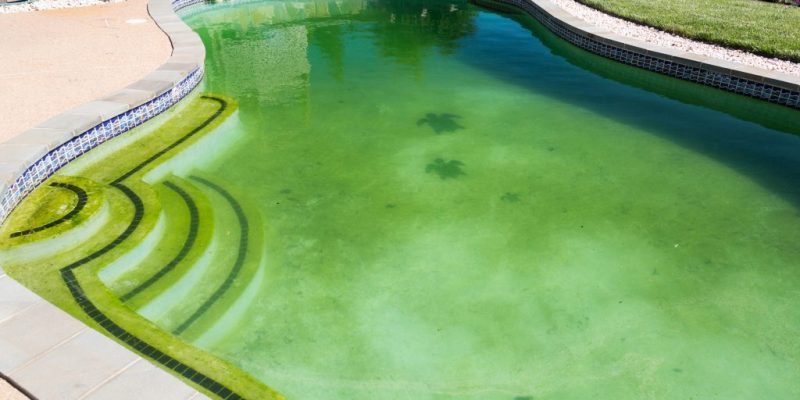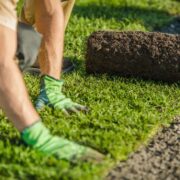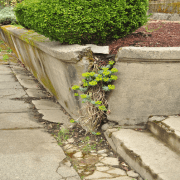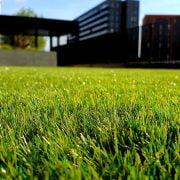Most modern homes today have a swimming pool because of the undeniable fun and entertainment it brings. Aside from the fact that you can take a dip any time you want, you can also organize bbq parties around it during the summer months. But fun and games aside, any pool owner will tell you that the most daunting thing about owning one is its maintenance.
A pool is one of the biggest investments you can make for your home. On top of that, it will take time, money, and meticulous care to keep the pristine condition of your pool. And at some point, you will experience an unsightly green pool that’s too repulsive to swim in.
So how do you maintain your pool and ensure it doesn’t turn into a backyard swamp? The first line of defense against an algae bloom is to keep your pool clean. Also, it is highly recommended to equip yourself with the best suction pool cleaner, which can make the cleaning process effortless. Manually cleaning your pool is a tedious process and will get worse with the incurring costs of purchasing cleaning chemicals.
What Causes A Green Pool?
One of the best ways to learn how to clear your green and prevent it next time is to understand why it turns that way in the first place.
Microorganisms like algae that are suspended in your pool water turn it green. That’s why it is critical that your filtration system is always in its best condition. A sand filter requires a fairly regular replacement of the sand. This can be anywhere from annually to every five years. If your pool filter is no longer as effective after backwashing, you want to consider changing the sand, which is an easier and cheaper job.
On the other hand, a DE filter, although more efficient, requires more upkeep. However, even if the pool filter system is functioning properly and can help prevent green water, the direct cause of it is not poor filtration. The most vital factor to ensure the water is clear, clean, and healthy is its pH level. And this is where biology comes in.
Every living cell is composed of acids. Thereby, acidic water encourages the growth of organisms in your swimming pool. With the right temperature and ample sunlight, your pool water will change to green pretty fast if it doesn’t have a perfect pH. So checking its pH level often, along with adding chlorine or a suggested alternative and regular cleaning is crucial.
Different Types Of Pool Cleaners
There are numerous reasons why it is extremely necessary to keep your pool well-maintained and clean. Aside from keeping algae and germs at bay, it also helps increase its lifespan. While there are tons of things you need to know in terms of pool upkeep, having the right tools is around 90% of it. And automatic pool cleaners are among these devices.
Investing in one of these convenient tools can make your life easier since it automatically picks up sediment and debris. That means you don’t have to spend the entire afternoon on your hands and knees scrubbing your pool and potentially hurting your back.
Pool cleaners are available in various types. But suction-side is the most popular with consumers because of its affordability and efficiency.
Suction-Side Pool Cleaners
The automatic pool cleaner generates suction with the help of your pool pumps. This type of pool cleaner does not need extra electricity to run, making it more energy-efficient. You simply attach it to a skimmer where the suction or intake happens. It maneuvers around utilizing the pressure of the water flow. Furthermore, it does an excellent job at climbing the sides of your pool.
You may want to monitor the device from time to time to ensure it covers the whole surface. Nevertheless, you can find a suction-side that uses a cyclonic scrubbing action, allowing it to continuously spin and scrub. Likewise, it will stay in constant contact with the surface of your pool to agitate and eliminate stuck-on debris.
Pressure-Side Pool Cleaners
Similar to the suction-side, this type also relies on the pump of your pool for power. As its name suggests, it uses the pressure side of your pool instead of its suction side.
The pressurized water that goes through the pool cleaner is what causes the suction and drives it throughout the surface. Moreover, it comes with filter bags, which means you won’t be putting additional strain on your swimming pool’s system. But the downside of this is you need to clean the filter bags often.
Robotic Pool Cleaners
Pool vacuum robots are the most high-tech automatic pool cleaners on the market. You simply program your unit by choosing the setting you want, drop it into the water, and it will do the job on its own. Moreover, it will not require any installation and you don’t need to attach it to the pool pump. You just plug it into an electrical outlet to power it up.
These cleaners can navigate their way around your pool surface with their built-in sensors. Also, they come with filter bags just like with pressure-side.
Step-By-Step Instructions On How To Clear A Green Pool
As they say, prevention is better than cure. So make sure you know the best pool cleaning tips around to avoid any problems in the future and to protect your investment as well.
But if you’re already seeing a growth of green sludge in your swimming pool, you need to take care of this right away. And here’s how to do it:
Step 1:
The first step you need to do is to get rid of as much dirt and debris like leaves floating in the water and those that have settled on the floor using a leaf net. It is not advisable to use a skimmer for this task.
You will notice that the situation will look worse as you will stir up tons of sediments during the process. But there’s no need to worry about it since all those filth will once again settle onto the pool floor in a little bit.
Step 2:
As mentioned, correcting your pool’s pH level is the most vital part of clearing your green pool. To go about this, begin by shocking your pool with chlorine. You can apply granular chlorine but liquid chlorine works much quicker.
Add approximately 3 to 4 gallons of liquid chlorine. Then, leave this overnight. If by the following day there’s no difference in the color of the water, do the process again. Keep in mind that since sunlight tends to deteriorate chlorine, affecting its efficacy, add it at the end of the day or dusk.
Continue with this until you see the water begins to change its color. Typically, after you dose your pool a few times, it will turn cloudy with white color. Also, you can consider adding algaecide to help with the process. Expect the water to begin becoming cloudy for up to four days.
Step 3:
Once you see the water begins to turn white or a lighter shade of green, begin filtering it out. On top of that, you may want to continuously run the pool pump for 24 hours. At this point, you must regularly backwash the filter of your pool since it will collect plenty of muck.
After giving your swimming pool shock treatment, it is advisable to backwash it every 3 to 4 hours or as often as possible. Keep in mind that the more you do this during the process, the more effective it will be. If you have a DE filter, you have to replenish it in the skimmer closet after every backwash.
Perform this continuously until you see the water turns blue again. Then once you see the color of the pool improving, check its pH level and adjust if necessary. Call a professional and ask for advice if your pool does not return to its normal state after five days.
Step 4:
Your pool will require some cleaning once you’re able to see its surfaces again. Expect that its walls and floors are dirtier than usual if you’ve neglected its water long enough to turn a nasty green color. This is the time to take your suction-side pool cleaner to handle the massive amount of debris. Additionally, you may want to backwash your pool after you’re done.














Comments